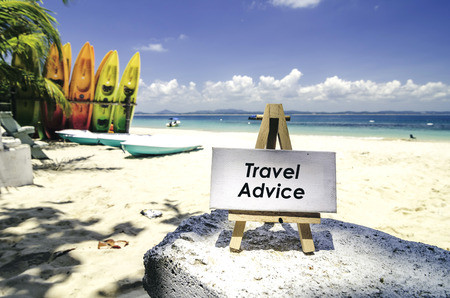צוות iSavta | 13.11.2019

The number of Overseas Filipino Workers abroad was estimated at 2.4 Million according to the April to September 2015 survey. 97.1 percent of this are OFWs with contract and the rest worked overseas without contract.
Because of the significant number of Filipinos who goes abroad to work plus those who travel for leisure, business or studies every year, the Department of Foreign Affairs regularly publish and update travel advisories to guide Filipino travelers who are coming in and out of the country.
Alert Levels are important for every Filipino to understand especially for those who are in critical countries like some parts of the Middle East. To those who are also working, travelling or studying in Israel, though the country is quite safe (opposite of the perception of majority of Filipinos), we cannot ignore the fact that there are some unfortunate days when the enemies of the state are trying to bring chaos in the country.
So, it is important for all Filipinos to know the current travel advisories especially those who are planning to embark on overseas trips:
Travel Advisories
We encourage all travelers to be responsible for their travel decisions. The Department of Foreign Affairs issues advisories in order to guide travelers in their travel plans. Travel advisories are important because they inform travelers of potential risks in the country of destination, as well as areas that travelers are not advised to tread on. These risks could range from threats to security, safety, health, local laws, or natural and man-made disasters.
By being informed of these risks, travelers will be able to avoid or minimize certain difficulties abroad.
Our travel advisories will provide basic guidance and information. However, we encourage travelers to complement our efforts by monitoring the latest developments in the country they intend to travel to.
Regardless of where or how long you travel or how familiar you are with your destination, it’s always wise to be informed and therefore prepared.
Alert Levels
The alert levels we assign to destinations reflect how we evaluate the threats that travelers may face in a certain destination. These alert levels shed light on the risks that travelers may potentially encounter at their country of destination.
The DFA has four alert levels:
- Alert Level 1 (Precautionary Phase)
- Alert Level 2 (Restriction Phase)
- Alert Level 3 (Voluntary Repatriation Phase)
- Alert Level 4 (Evacuation/Mandatory Repatriation)
Alert Level 1
- Precautionary Phase
- Issued when there are valid signs of internal disturbance, instability, and/or external threat to the host country.
- Types of precautions that travelers may take:
- Before going
- While travelling
Alert Level 2
- Restriction Phase
- Issued if there are real threats to the life, security, and property of Filipinos arising from internal disturbance, instability, or external threat.
- Types of precautions that travelers may take:
- Before going
- While travelling
Alert Level 3
- Voluntary Repatriation Phase
- Issued when violent disturbances or external aggression occur in a limited area.
- Types of precautions that travelers may take:
- Before going
- While travelling
Alert Level 4
- Evacuation/Mandatory Repatriation
- Issued when there is large-scale internal conflict or full-blown external attack
- Types of precautions that travelers may take:
- Before going
- While travelling
What information does the DFA use to develop travel advisories?
The DFA uses a range of credible sources of information to craft travel advisories such as:
- Reports from our Foreign Service Posts
- Our analyses of common problems that Filipinos experience overseas
- Information from other relevant government agencies
- Media and open source reporting
How will I know when the travel advisory or alert levels have been updated?
Check DFA.GOV.PH to view updates on travel advisories.
Source: DFA, Philippines


